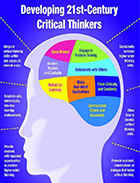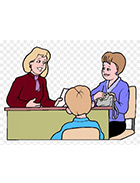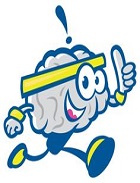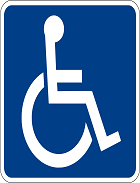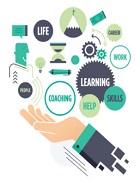Friedrich Froebel – The man behind the Kindergarten system
Friedrich Froebel – The man behind the Kindergarten system
Friedrich Froebel, a German educationalist, developed the ‘kindergarten system’. Fr
 oebel believed in play to be the highest form of expression and believed it to reflect a child’s soul.
oebel believed in play to be the highest form of expression and believed it to reflect a child’s soul.According to Froebel, the concept of play helps children understand the world by gaining a direct experience from it. The emphasis on nature and play, and the experience from it has shaped the kindergarten system all over the world.
Froebel took into consideration the complete development of the child while designing the kindergarten system and focused on aspects like health, physical development, emotional well-being, mental ability, and social relationships.
Gifts developed by Froebel:
Froebel developed certain gifts, aimed at developing skills, based on his experience and observation. These toys can be considered as the ‘first educational toys’ for children. These are called ‘gifts’, as they function as tools that can be used by the adults to observe the distinctive human ‘gifts’ each child has, from birth.
The gifts developed by him are as follows –
-
Gift 1 – A set of multi-coloured yarn balls
Froebel introduced colourful yarn balls for infants, after having recognised that play for them begins when they are introduced to yarn balls. According to Froebel, a child begins to form impressions of the world by holding, rolling and playing with the ball. The balls help the child to understand movement and form, and basic colours. This is an early physical activity which enhances hand-eye coordination and motor skills.
-
Gift 2 – A wooden ball, cylinder, and cube
Froebel termed this as ‘children’s delight’ and this was developed for the age group 1 to 2. The object in this gift helps a child to understand the forms of basic objects around him/her. This not only teaches children about the basic shapes, but also introduces them to prepositions like on, under, inside, outside, etc. This gift encourages children to be curious and creates a foundation for basic science.
-
Gift 3 – A set of 8 small wooden cubes
This was developed for the age group 2 to 3 and, helps to demonstrate relation between whole and parts, the process of transformation, and the properties of shapes. This gift is to enable children to create simple designs of objects in the environment. They will also acquire knowledge on sorting, counting and vocabulary.
-
Gift 4 – A set of 8 small rectangles or planks
This is a slight variation of Gift 3 and has been developed for age 3 to 4. This activity will help children create simple structures and will introduce them to new words like rectangle, width, length, etc.
-
Gift 5 – A set of wooden blocks that includes cubes, rectangles, and triangles
This gift has been developed for the age group 4 to 5. The blocks will help children to create realistic objects like building and will introduce them to new terms like triangle, angle, etc.
-
Gift 6 – A set of wooden blocks of different shapes and sizes
This is used to develop skills like creating objects, learning new words and understanding proportion, and is for children above 5 years.
-
Gift 7 – A set of different shapes
This gift consists of shapes of different colours and helps children understand the transition from solid to flat structures. This helps children to represent objects in 2-dimensional form while creating newer shapes like rhombus, trapezium, etc. Children will also learn to create objects from their daily life and understand symmetry.
-
Gift 8 – A set of curved and straight lines
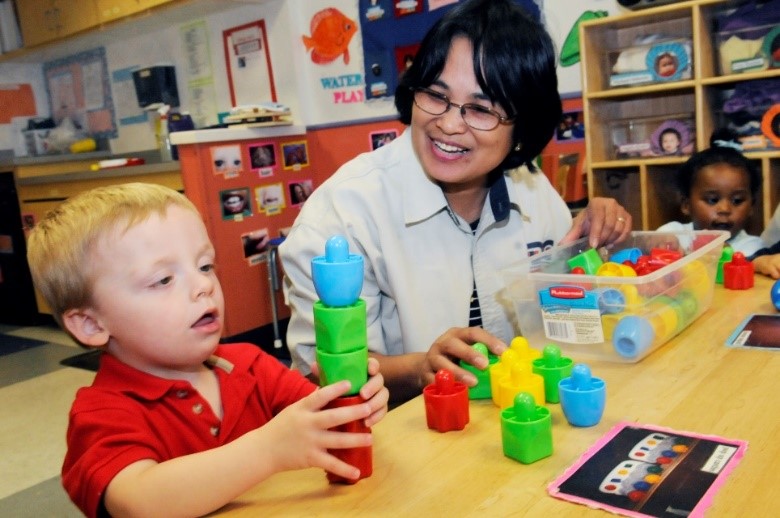
This consists of edges/outlines of shapes that have been used by the children. This gift encourages the child to come up with symmetrical shapes, create objects from daily life based on his/her observation and learn new words based on the object created. The activity is ideal for kids above 5 years.
-
Gift 9 – A set of points
Under this gift, children are given small circles/points of different colours and are encouraged to create various objects. Children are introduced to the concept of sorting and ordering, based on the colours and is applicable for children above 6 years.
-
Gift 10 – A set of points and lines
This gift encourages the creation of solid forms using the points and lines. This develops an understanding of shapes and forms and is for children above 6 years.
While many other methods like Montessori, Reggio Emilia, etc. have been developed over the years, the Kindergarten system has had a global approach and has shaped the early-years education in many countries.












